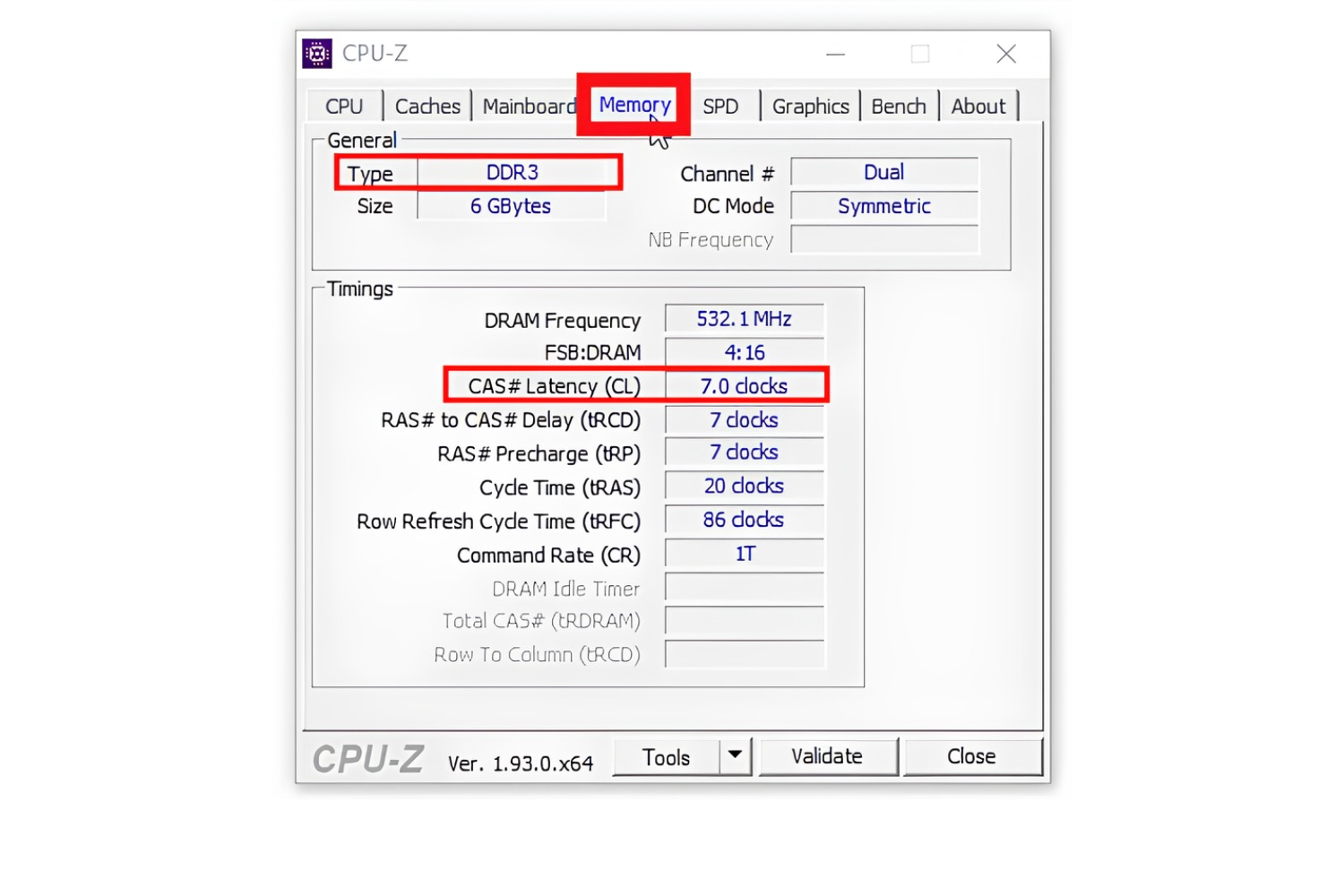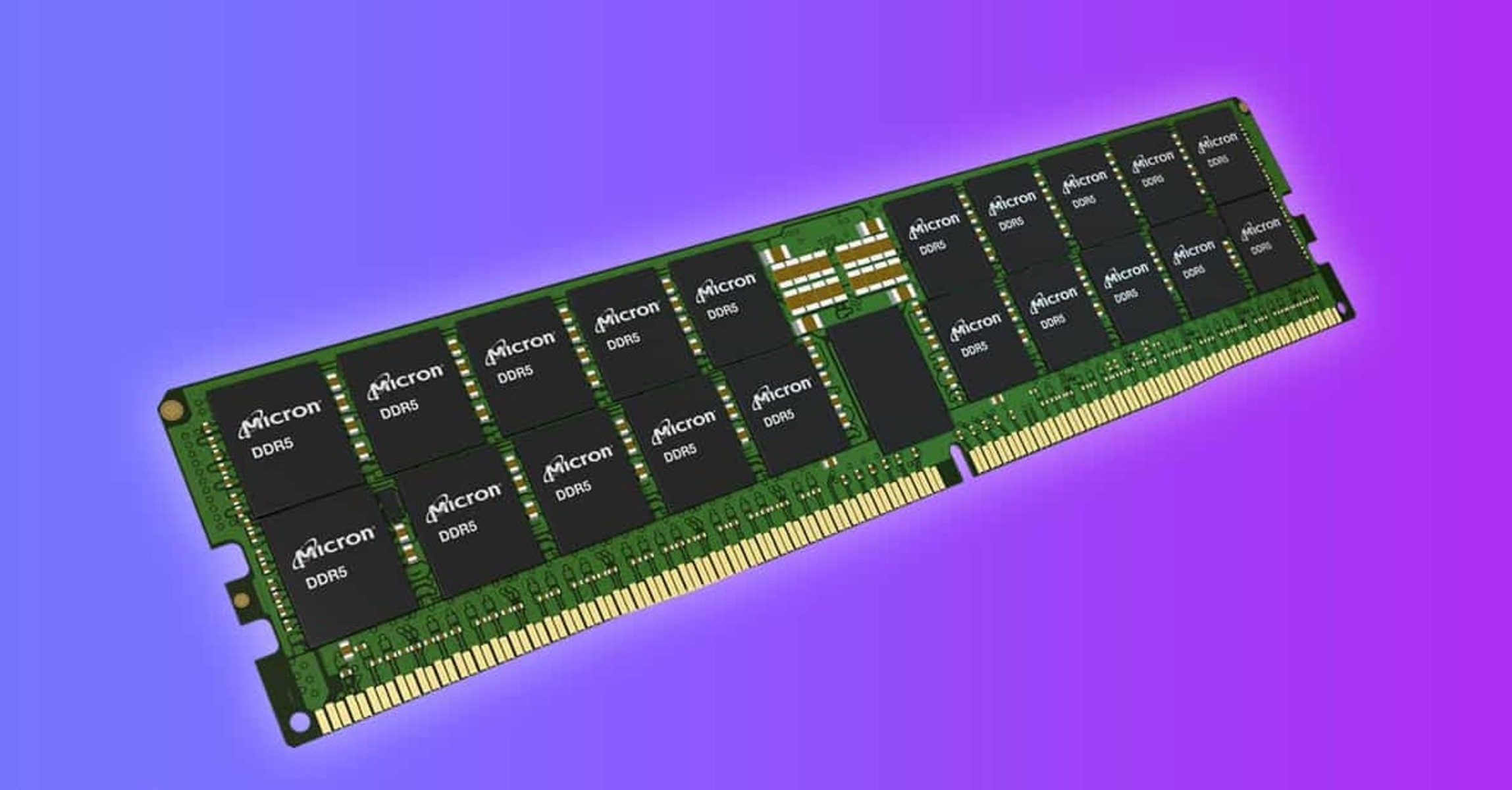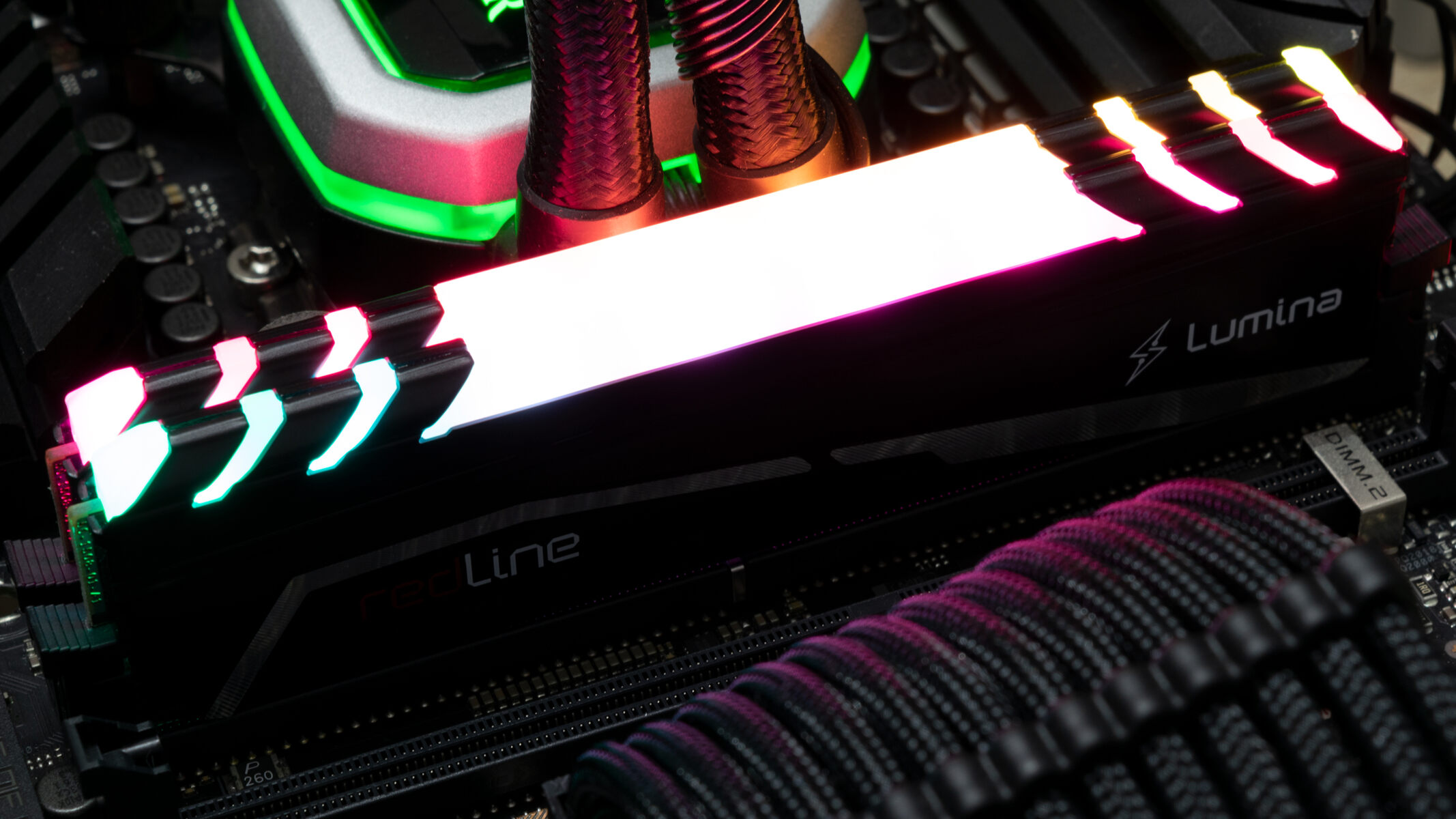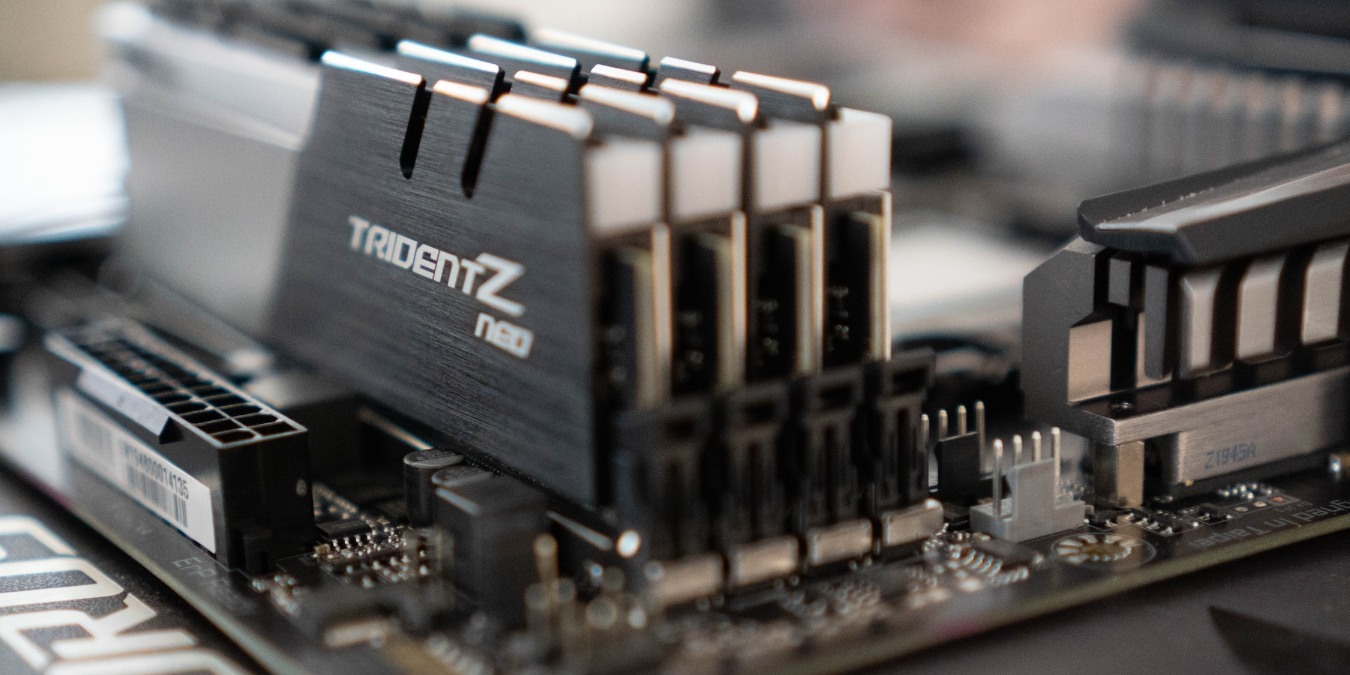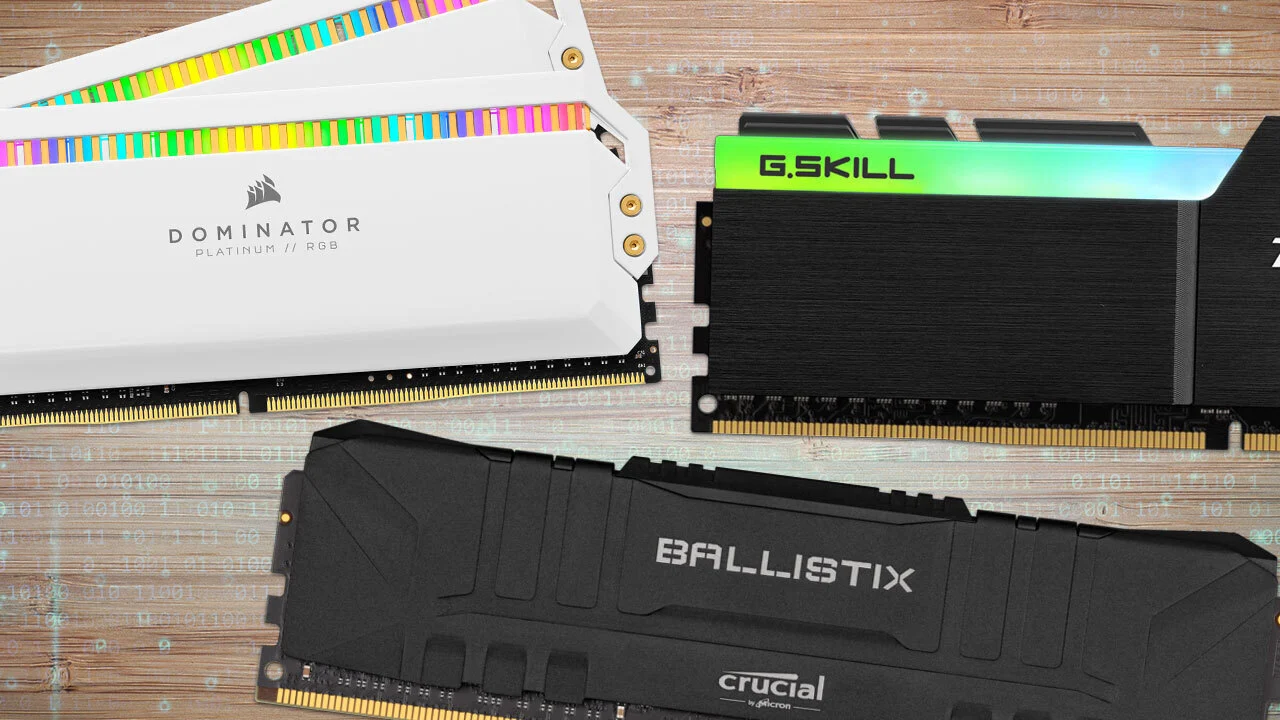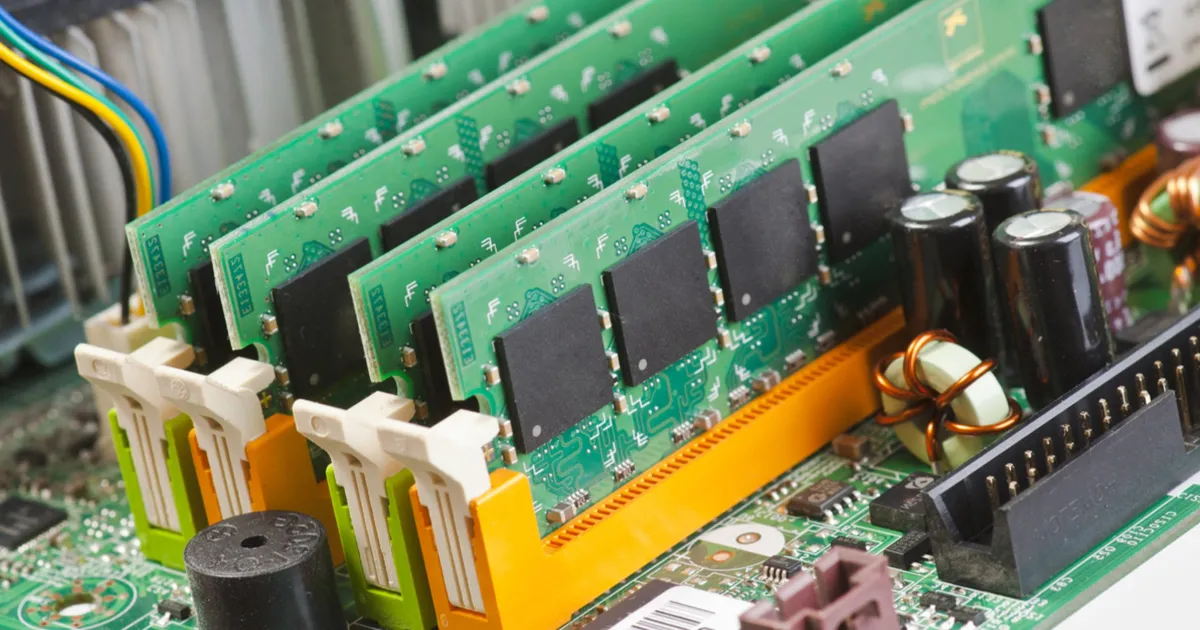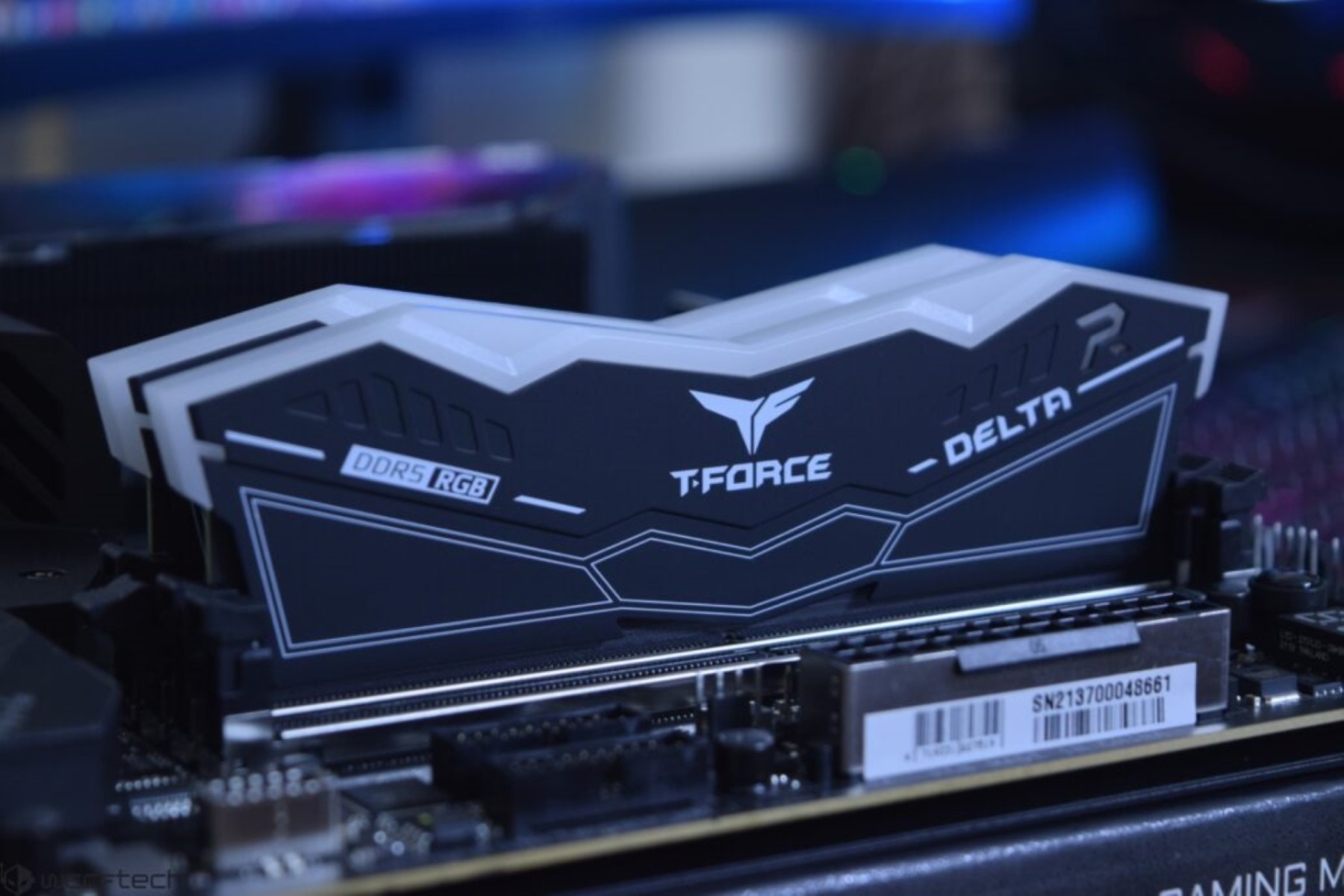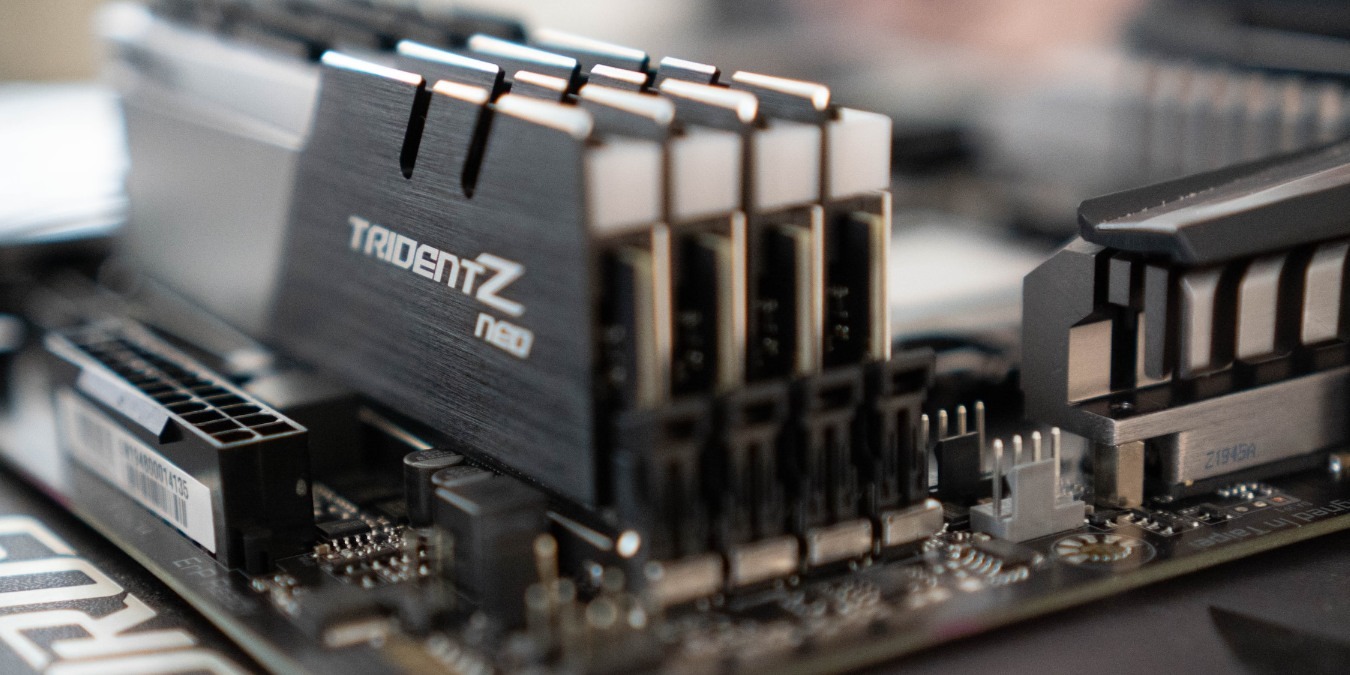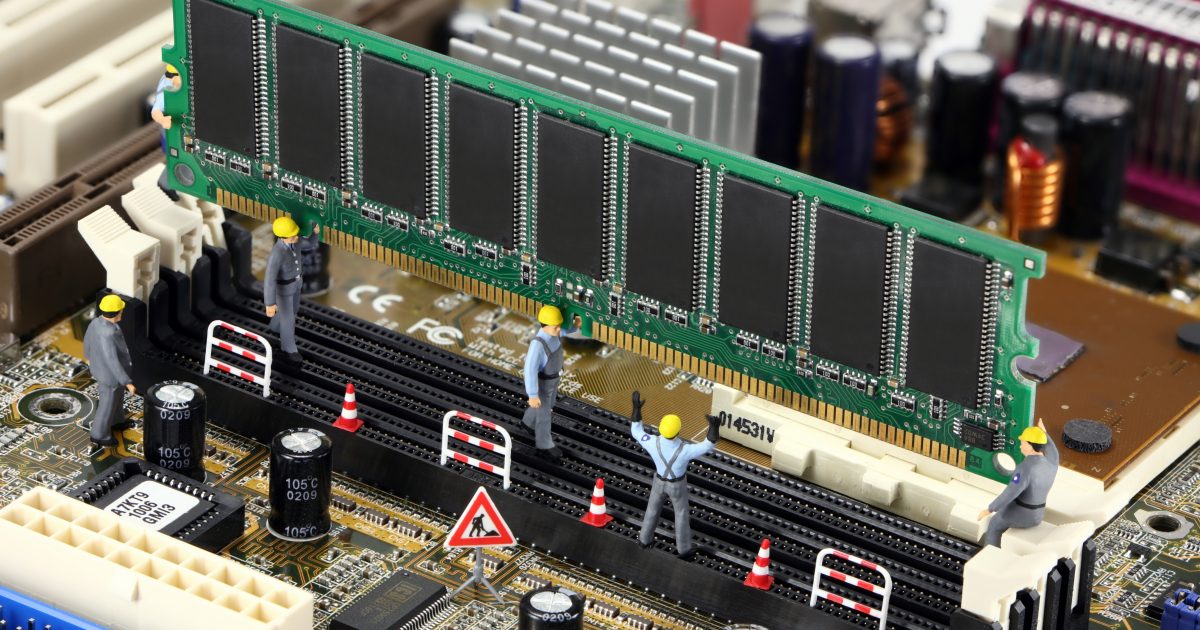Introduction
Welcome to this guide on how to find RAM latency. If you’re someone who uses a computer or a gaming enthusiast, you may have come across the term “RAM latency” before. RAM latency plays a critical role in determining the performance and speed of your computer’s memory.
RAM, or Random Access Memory, is one of the most important components of a computer. It is responsible for temporarily storing and providing fast access to data that the CPU needs to perform tasks. RAM latency refers to the time it takes for the RAM to respond to the CPU’s requests. It is essentially the delay between the CPU sending a request for data and the RAM retrieving and delivering that data.
Why is RAM latency important? Lower latency means faster data retrieval and processing, leading to improved overall system performance. When latency is high, it can result in slower loading times, decreased responsiveness, and reduced efficiency when running applications or games. Therefore, understanding and optimizing RAM latency is crucial for maximizing the speed and responsiveness of your computer.
Several factors can affect RAM latency, including the type and speed of the RAM modules, the motherboard’s capabilities, and the CPU’s memory controller. In this guide, we will explore different methods to determine the RAM latency of your system and provide tips for improving it.
So, if you’re ready to dive into the world of RAM latency and enhance the performance of your computer, let’s get started!
What is RAM Latency?
RAM latency refers to the time it takes for the RAM module to respond to the CPU’s requests for data. It is measured in clock cycles and typically expressed as a series of numbers known as timings. The primary timing that denotes RAM latency is called CAS latency (CL), which stands for Column Address Strobe latency.
In simple terms, RAM latency represents the delay between the moment the CPU sends a data request to the RAM and the time the RAM provides the requested data back to the CPU. When the CPU needs to fetch data from RAM, it first sends a command known as a row address. The RAM uses this address to locate the desired row in its memory array. Once the row is located, the RAM sends the requested data back to the CPU. The time taken for this entire process is known as RAM latency.
The CAS latency (CL) timing is the most crucial aspect of RAM latency. It indicates the number of clock cycles the RAM module takes to respond to the CPU’s request. For example, if the CAS latency is CL16 and you are using RAM that runs at 3200 MHz, it means the RAM will take 16 clock cycles to provide the data. Lower CAS latency values indicate faster response times and better performance.
RAM latency is often confused with RAM speed, but they are not the same thing. RAM speed refers to the frequency at which the RAM operates, measured in megahertz (MHz). Higher RAM speeds allow for faster data transfer between the RAM and CPU. However, RAM latency and RAM speed are two independent factors that work together to determine the overall performance of the computer’s memory subsystem.
Understanding RAM latency is essential because it directly affects the overall system performance. Lower latency means that the CPU can access data from RAM more quickly, resulting in faster application loading times, smoother multitasking, and improved responsiveness. On the other hand, higher latency can cause delays and bottlenecks, leading to slower performance and decreased efficiency.
In the next section, we will explore why RAM latency is important and how it can impact various aspects of your computer’s performance.
Why is RAM Latency Important?
RAM latency plays a crucial role in determining the overall performance and speed of your computer’s memory subsystem. It impacts several key aspects of your computer’s operation, making it essential to understand its importance. Here are some reasons why RAM latency is important:
1. System Responsiveness: Lower RAM latency results in faster data retrieval and processing, leading to improved system responsiveness. When you’re running multiple applications or performing memory-intensive tasks, low latency allows for quick access to data, reducing delays and providing a smoother experience.
2. Application Loading Times: RAM latency directly affects the time it takes for applications to load and respond. Lower latency means that the CPU can retrieve the required data from RAM more quickly, resulting in faster application launch times and snappier performance.
3. Gaming Performance: Gamers rely heavily on their computer’s memory subsystem for smooth and responsive gameplay. RAM latency can significantly impact gaming performance, affecting factors such as frame rates, rendering times, and overall game responsiveness. Lower latency ensures faster data access, reducing lag and improving the gaming experience.
4. Multitasking Capability: If you often work with multiple applications simultaneously, low RAM latency is essential. It allows for faster switching between applications and smoother multitasking. With lower latency, data retrieval from RAM is quicker, enabling a seamless transition between tasks without significant delays.
5. Overall System Performance: RAM latency influences the performance of the entire system, not just specific applications. Faster memory access means that the CPU can quickly retrieve data from RAM, improving the efficiency of tasks such as file transfers, video editing, and 3D rendering.
6. Overclocking Potential: Overclocking refers to running computer components at higher frequencies than their default settings. When overclocking RAM, lower latency becomes even more critical. RAM modules with lower latency timings provide better stability and higher overclocking potential, allowing users to achieve higher memory speeds without sacrificing performance.
In summary, RAM latency is important because it directly affects system responsiveness, application loading times, gaming performance, multitasking capability, overall system performance, and overclocking potential. By optimizing RAM latency, you can enhance the speed and efficiency of your computer’s memory subsystem and improve the user experience across various tasks and applications.
Factors Affecting RAM Latency
Several factors can impact RAM latency, and understanding these factors is important for optimizing the performance of your computer’s memory. Here are some key factors that can affect RAM latency:
1. RAM Module Type and Speed: The type and speed of the RAM module can significantly affect latency. Different generations of RAM, such as DDR3, DDR4, and DDR5, have varying latency characteristics. Additionally, higher-speed RAM modules tend to have lower latencies, providing faster data access and retrieval.
2. CAS Latency (CL) Timing: The CAS latency, denoted by the CL timing, plays a critical role in RAM latency. CAS latency represents the number of clock cycles it takes for the RAM to respond to the CPU’s request. Lower CAS latency values result in faster response times and lower latency.
3. Memory Controller: The memory controller on the CPU or motherboard is responsible for managing the flow of data between the RAM and the CPU. The efficiency and capabilities of the memory controller can impact RAM latency. Modern CPUs and motherboards often have advanced memory controllers that can help optimize latency performance.
4. CPU and Motherboard Compatibility: The compatibility between the CPU and motherboard can affect RAM latency. It is important to ensure that your CPU and motherboard support the RAM modules you are using to take full advantage of their capabilities. Checking the CPU and motherboard specifications is crucial to prevent compatibility issues that may impact latency.
5. Overclocking: Overclocking refers to increasing the frequency and performance of computer components beyond their default settings. While overclocking can provide higher memory speeds, it can also impact RAM latency. Overclocking requires careful consideration of voltage, timing settings, and stability testing to ensure optimal performance and minimal impact on latency.
6. Voltage and Power Settings: The voltage and power settings applied to the RAM can affect latency. Generally, higher voltages can lead to increased stability but may also result in higher latency. It is essential to find a balance between stability and latency when adjusting voltage and power settings.
7. Operating System and Software Configuration: The operating system and software running on your computer can have an indirect impact on RAM latency. Optimizing the operating system settings, updating drivers, and minimizing background processes can help reduce latency and improve overall system performance.
8. Cooling and Temperature: Excessive heat can negatively affect RAM performance and increase latency. Proper cooling and maintaining optimal operating temperatures can help ensure optimal RAM performance and minimize latency-related issues.
By considering these factors and optimizing them according to your system’s specifications and requirements, you can reduce RAM latency and enhance the performance of your computer’s memory subsystem.
How to Determine RAM Latency
There are several methods you can use to determine the RAM latency of your system. These methods will allow you to identify the CAS latency (CL) timing and other important timings associated with your RAM modules. Here are three common methods you can use:
Method 1: Check the RAM Specifications: The first method is to refer to the specifications of your RAM modules. The packaging or documentation that came with your RAM should provide detailed information about the timings, including the CAS latency (CL) timing. These specifications can typically be found on the manufacturer’s website as well. Look for the exact model number or name of your RAM modules and search for the associated technical specifications.
Method 2: Use CPU-Z or Similar Software: Another method is to use software tools like CPU-Z, which can provide detailed information about your system’s hardware components, including the RAM timings. CPU-Z displays information about the memory type, frequency, timings, and other relevant details. Download a trusted software tool like CPU-Z, install it, and run the program. Navigate to the “Memory” or “SPD” tab to find the timings for each RAM module installed in your system.
Method 3: Run Memory Testing Programs: Memory testing programs, such as MemTest86 or PassMark MemTest, can also help determine RAM latency. These programs are designed to stress test and diagnose issues with your system’s memory. During the testing process, they provide detailed reports that include information about the RAM timings, including the CAS latency (CL) timing. Run one of these memory testing programs and review the results to find the latency values.
It is important to note that Method 1 (checking RAM specifications) provides the most accurate information about the specific timing values of your RAM modules. Methods 2 and 3 can give you a general idea of the timings, but they may not provide the exact values. Therefore, if you want precise information, referring to the RAM specifications is recommended.
Once you have determined the RAM latency values, it is important to understand how to interpret them, which we will discuss in the next section.
Method 1: Check the RAM Specifications
One of the most straightforward methods to determine RAM latency is to check the specifications provided by the manufacturer. The packaging or documentation that came with your RAM modules should contain detailed information about the timings, including the CAS latency (CL) timing. Here’s how you can use this method:
1. Locate the Specifications: Retrieve the packaging or documentation that came with your RAM modules. Alternatively, you can search for the specific model number or name of your RAM modules on the manufacturer’s website to find the associated technical specifications.
2. Identify the CAS Latency (CL): Look for the CAS latency (CL) timing in the specifications. The CAS latency is the primary timing that denotes RAM latency. It represents the number of clock cycles the RAM module takes to respond to the CPU’s request for data. For example, if the CAS latency is CL16, it means that the RAM will take 16 clock cycles to provide the requested data.
3. Note Other Timings: In addition to the CAS latency, the RAM specifications may provide information about other timings, such as tRCD, tRP, and tRAS. These timings represent the delays associated with different operations in RAM, such as activating rows, accessing columns, and precharging. Understanding these timings can provide a more comprehensive understanding of RAM latency.
4. Study the RAM Speed: Along with the timings, the RAM specifications will also indicate the RAM speed, measured in megahertz (MHz). Higher RAM speeds allow for faster data transfer between the RAM and CPU. It is important to consider both RAM speed and latency when evaluating the overall performance of your RAM modules.
5. Compare Different RAM Modules: If you are considering upgrading or purchasing new RAM modules, comparing the specifications of different options can help you choose the best module for your needs. Pay attention to the CAS latency and other timings as well as the RAM speed to assess the overall performance of the RAM module.
By checking the RAM specifications, you can obtain accurate information about the timings, including the CAS latency, of your RAM modules. This method provides the most precise details about your RAM’s latency characteristics. Understanding these specifications will help you make informed decisions regarding your computer’s memory and optimize its performance.
Method 2: Use CPU-Z or Similar Software
CPU-Z is a popular software tool that provides detailed information about your system’s hardware components, including the RAM timings. Using CPU-Z or similar software can help you determine the RAM latency of your system. Follow these steps to use this method:
1. Download and Install CPU-Z: Begin by downloading CPU-Z from a trusted source. CPU-Z is available for free and is widely used for hardware information and monitoring. Once downloaded, install the software on your computer.
2. Launch CPU-Z: After installation, launch CPU-Z. The program will provide an overview of various system information on different tabs.
3. Navigate to the Memory Tab: In CPU-Z, navigate to the “Memory” tab. This tab provides detailed information about your computer’s RAM modules.
4. Review the Timings: Look for the section that displays the timings for each RAM module installed in your system. You will find information such as CAS latency (CL), tRCD, tRP, tRAS, and more. The CAS latency represents the primary timing associated with RAM latency.
5. Note the CAS Latency (CL): Identify the CAS latency (CL) value for each RAM module. The CL timing indicates the number of clock cycles the RAM module takes to respond to the CPU’s request for data. For example, if the CAS latency is CL16, it means that the RAM will take 16 clock cycles to provide the requested data.
6. Study Other Timings: Take note of the other timings displayed in CPU-Z, such as tRCD, tRP, and tRAS. These represent the delays associated with different operations in RAM. Understanding these timings can provide a more comprehensive understanding of RAM latency.
7. Compare Timings: If you have multiple RAM modules installed, compare the timings for each module to ensure consistency. It is ideal to have the same or similar timings across all modules for optimal performance and stability.
CPU-Z is a reliable tool for obtaining information about the timings and latency of your RAM modules. It provides an easy and convenient way to determine your RAM’s latency characteristics and assists in making informed decisions regarding your computer’s memory configuration.
Method 3: Run Memory Testing Programs
Running memory testing programs can be an effective method to determine RAM latency. These programs stress test your system’s memory and provide comprehensive reports that include information about the RAM timings, including the CAS latency (CL) timing. Follow these steps to use this method:
1. Choose a Memory Testing Program: Select a reliable memory testing program, such as MemTest86 or PassMark MemTest. These programs are designed to detect and diagnose issues with your computer’s memory.
2. Download and Install the Software: Download the memory testing program of your choice from a trusted source. Install the software on your computer following the instructions provided.
3. Configure the Settings: Launch the memory testing program and configure the settings according to your preferences. You might have options to choose specific test patterns and durations. It is recommended to run the tests for an extended period to ensure thorough testing of your memory.
4. Run the Memory Tests: Start the memory tests and let the program perform the stress testing on your RAM. The software will analyze different aspects of your memory, including the timings.
5. Check the Test Results: Once the memory tests are complete, review the test reports generated by the program. Look for the section that provides information about the RAM timings, including the CAS latency (CL) timing.
6. Identify the CAS Latency (CL): Locate and note the CAS latency (CL) value in the test report. The CAS latency represents the number of clock cycles the RAM module takes to respond to the CPU’s request for data.
7. Review Other Timings: Take note of other timings provided in the test report, such as tRCD, tRP, tRAS, etc. Understanding these timings can provide a more comprehensive understanding of the RAM latency.
8. Compare Results and Re-run Tests (if necessary): If you have multiple RAM modules installed, compare the results for each module to ensure consistency. If any issues or discrepancies are detected in the tests, you may consider re-running the tests or further investigating the underlying causes.
Running memory testing programs can provide accurate information about the timings and latency of your RAM modules. It helps identify any potential issues with your RAM and ensures optimal performance of your computer’s memory subsystem.
How to Interpret RAM Latency Numbers
Interpreting RAM latency numbers is essential to understand the performance and capabilities of your computer’s memory. When analyzing RAM latency, you primarily look at the CAS latency (CL) timing, which represents the number of clock cycles the RAM module takes to respond to the CPU’s request for data. Here’s how you can interpret RAM latency numbers:
1. Lower CAS Latency (CL): A lower CAS latency value indicates better RAM performance. For example, a RAM module with a CAS latency of CL14 has a faster response time than a module with a CAS latency of CL16. Lower CAS latency values result in shorter delays and faster data retrieval, leading to improved overall system performance.
2. Impact of RAM Speed: RAM speed, measured in megahertz (MHz), also affects overall system performance. Higher RAM speeds allow for faster data transfer between the RAM and CPU. However, it is important to consider both RAM speed and latency together, as they are interrelated. Sometimes, higher-speed RAM modules may have slightly higher CAS latencies, and vice versa. Therefore, finding the right balance between speed and latency is crucial for optimizing performance.
3. Timings Relationship: In addition to the CAS latency (CL), other timings, such as tRCD, tRP, and tRAS, are important for understanding the overall RAM latency. These timings represent various operations within the RAM module. For example, tRCD (RAS to CAS delay) represents the time delay between activating a row in memory and starting a column access. Understanding these timings allows for a more comprehensive evaluation of RAM latency.
4. Comparing Latency Values: When comparing RAM latency values, it is important to consider the actual difference in clock cycles rather than looking solely at the numbers. For example, a difference of a few clock cycles may not noticeably affect performance in everyday tasks. However, activities such as gaming or professional applications that require high-speed data access may benefit from lower latencies.
5. Real-World Performance: While RAM latency does impact system performance, it is important to note that the actual impact may vary depending on the specific workload or application being used. The difference in real-world performance between RAM modules with slightly different latencies may not be significant in many scenarios. Therefore, it is crucial to consider factors such as the overall system configuration, application requirements, and intended usage when interpreting RAM latency numbers.
By interpreting RAM latency numbers correctly, you can make informed decisions when choosing RAM modules and optimizing the performance of your computer’s memory subsystem.
Understanding the Different Types of RAM Latency
When it comes to RAM latency, it’s important to understand that different types of latency are associated with RAM modules. These latency types provide insights into various aspects of RAM performance and can impact the overall system performance. Here are the key types of RAM latency you should know:
1. CAS Latency (CL): CAS latency, denoted by the CL timing, is the most commonly discussed type of RAM latency. It represents the number of clock cycles the RAM module takes to respond to the CPU’s request for data. For example, a CL16 latency means that the RAM will take 16 clock cycles to provide the requested data. Lower CL values indicate faster response times and better performance.
2. tRCD (RAS to CAS Delay): tRCD represents the delay between activating a row in memory (RAS) and starting a column access (CAS). It measures the time taken to open a row and is an important timing that affects RAM performance. Lower tRCD values indicate faster data access.
3. tRP (RAS Precharge Time): tRP measures the delay between the precharging of one row and the activation of another row. It indicates the time taken for the RAM to prepare for the next memory operation. Lower tRP values result in faster switching between rows.
4. tRAS (Active to Precharge Time): tRAS represents the minimum amount of time the memory must wait before the next memory access. It measures the time needed to complete a memory transaction and prepare for the next one. Lower tRAS values contribute to faster memory operations.
5. Command Rate (CR): The command rate determines the number of clock cycles between memory commands. It represents the latency between the chip select signal and the first valid command. A higher command rate (e.g., 2T) implies a slightly longer latency compared to a lower command rate (e.g., 1T).
When evaluating RAM modules, it’s important to consider these different types of latency. While CAS latency (CL) is often the primary focus, understanding all the latencies provides a more comprehensive view of memory performance. Each latency type contributes to the overall responsiveness and efficiency of the RAM module.
It’s worth noting that different generations of RAM, such as DDR3, DDR4, and DDR5, may have varying latency characteristics. Newer generations of RAM tend to offer improvements in latency, speed, and overall performance. Therefore, carefully consider the specifications and compatibility of RAM modules with your system when aiming for optimal performance.
By understanding the different types of RAM latency and their implications, you can make informed decisions and select RAM modules that best suit your specific performance requirements and budget constraints.
Tips for Improving RAM Latency
Improving RAM latency can result in faster data access, improved system responsiveness, and enhanced overall performance. Here are some tips to help you optimize RAM latency:
1. Choose RAM Modules with Lower Latency: When purchasing or upgrading RAM, select modules with lower CAS latency (CL) values. RAM modules with lower latency timings provide faster response times and better performance. Consider specifications such as CL14 or CL16 for improved latency performance.
2. Optimize RAM Speed and Timings: Strike a balance between RAM speed and timings. Higher RAM speeds may result in slightly increased latency, so choose RAM modules with an appropriate balance of speed and latency for your requirements.
3. Enable XMP/DOCP Profile: XMP (Intel Extreme Memory Profile) or DOCP (Direct Overclock Profile) is a feature available in most modern motherboards. Enabling the XMP/DOCP profile allows your RAM to run at its rated speed and optimized timings. Ensure that your motherboard supports XMP/DOCP and activate the profile in the BIOS settings.
4. Update BIOS and Drivers: Keeping your motherboard’s BIOS and chipset drivers up to date can improve RAM compatibility, stability, and performance. Visit the manufacturer’s website to check for any available updates and install them as recommended.
5. Ensure Proper RAM Installation: Ensure that your RAM modules are correctly inserted into the motherboard’s memory slots. Improper installation can lead to compatibility issues or reduced performance. Refer to the motherboard manual for the recommended configuration and slot assignments.
6. Maintain Optimal System Cooling: Excessive heat can negatively affect RAM performance and increase latency. Ensure proper system cooling by maintaining adequate airflow, cleaning dust from the fans and heatsinks, and using additional cooling solutions if necessary.
7. Avoid Mixing Different RAM Modules: Mixing different RAM modules, particularly those with varying specifications, can result in compatibility issues and potentially higher latency. It is recommended to use identical RAM modules (same brand, speed, and timings) for optimal performance.
8. Consider Overclocking: If you have sufficient knowledge and adequate cooling, overclocking the RAM may provide a performance boost. However, it is essential to proceed cautiously and make small adjustments while stress-testing the system for stability.
9. Minimize Background Processes: Closing unnecessary programs and processes running in the background can reduce memory usage and improve overall system performance. By minimizing the demand on RAM, you can optimize latency and free up resources for the tasks at hand.
By implementing these tips, you can enhance the performance and efficiency of your RAM, resulting in reduced latency and better overall system responsiveness. Remember to monitor the system for stability after any changes and fine-tune the settings based on your specific requirements.
Conclusion
Understanding RAM latency is crucial for optimizing the performance of your computer’s memory subsystem. RAM latency, represented primarily by the CAS latency (CL) timing, determines the time it takes for the RAM module to respond to the CPU’s request for data. Lower latency results in faster data access, improved system responsiveness, and enhanced overall performance.
In this guide, we’ve covered various aspects of RAM latency, including its importance, factors affecting latency, methods for determining latency values, and tips for improving latency performance. By considering the type and speed of your RAM modules, checking specifications, using software tools like CPU-Z, or running memory testing programs, you can accurately determine the latency characteristics of your RAM.
Additionally, understanding the different types of RAM latency, such as CAS latency (CL), tRCD, tRP, tRAS, and command rate, provides a comprehensive view of RAM performance and helps in making informed decisions when selecting and configuring RAM modules.
To improve RAM latency, consider choosing RAM modules with lower latency values, optimizing RAM speed and timings, enabling XMP/DOCP profiles, updating BIOS and drivers, ensuring proper installation, maintaining system cooling, avoiding mixing different RAM modules, considering overclocking cautiously, minimizing background processes, and fine-tuning the system for optimal stability and performance.
By implementing these strategies and optimizing RAM latency, you can enhance the speed, responsiveness, and efficiency of your computer’s memory subsystem, leading to a better overall computing experience.







